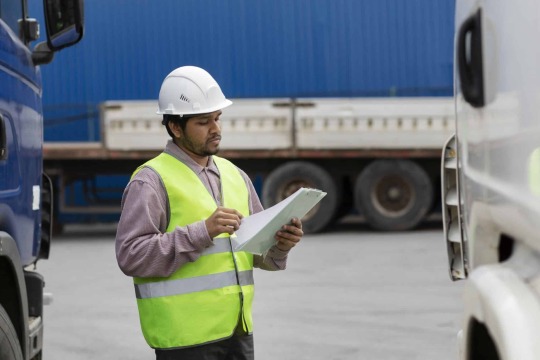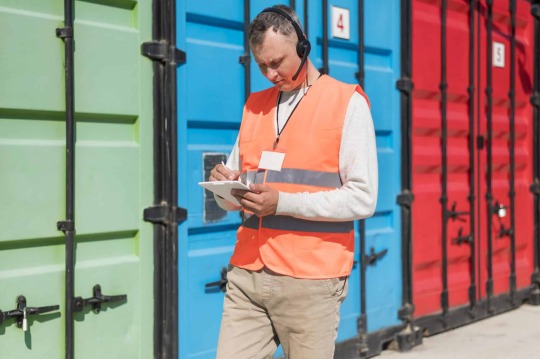At Ship Overseas, we specialize in delivering reliable and efficient international shipping services for a wide range of needs.
Don't wanna be here? Send us removal request.
Text

🌊 Rotterdam Port = Mega. Seriously.
📌 Fun Fact: It’s been the world’s busiest port (outside Asia) for decades!
🚗✨ Got a car needing a ride from the U.S. to the Netherlands? We ship stress-free!
DM or check out 👉 www.shipoverseas.com
1 note
·
View note
Text
Shipping Electric Vehicles (EVs) Overseas: Special Considerations
Why EV shipping requires unique handling
Transporting electric vehicles internationally involves distinct challenges compared to traditional car shipping. From battery regulations to charging infrastructure, here’s how to ensure your EV arrives safely and complies with global standards.

1. Battery safety and regulations
EV lithium-ion batteries are classified as hazardous materials. Key requirements:
State of Charge (SOC): Most carriers require batteries at 30-50% capacity.
UN38.3 Certification: Mandatory for air/sea transport.
Fireproof Casing: Often required for container shipping.
Tip: Work with EV-certified shipping companies to avoid rejections.
2. Choosing the right transport method
EV shipping options vary by destination:
Enclosed Containers: Best for high-value EVs (e.g., Tesla, Lucid).
RoRo Ships: Cost-effective but limited battery SOC allowances.
Air Freight: Fast but expensive (requires special permits).
For shipping to Europe, check EU’s 2023 battery transport directives.

3. Customs clearance for EVs
Unique documentation needs:
Battery technical specifications.
Proof of compliance with destination country’s EV policies (e.g., Europe’s CE marking).
Recycling agreements for end-of-life batteries.
4. Insurance considerations
Standard marine insurance may exclude:
Battery degradation during transit.
Specialized EV parts replacement costs.
Opt for policies covering “green vehicle” transport.

5. Post-shipping preparations
After arrival:
Recharge batteries slowly to avoid thermal stress.
Update software for regional compatibility.
Register with local EV incentive programs.
1 note
·
View note
Text

Drop your guess below (or tag a logistics pro who’d know!).
P.S. Fun fact: It’s home to the world’s largest man-made harbor!
1 note
·
View note
Text
Customs Clearance for Heavy Equipment: How to Avoid Delays & Fees
Why customs clearance is critical for heavy machinery shipments
Navigating customs clearance is one of the most complex aspects of shipping heavy machinery internationally. Missteps can lead to costly storage fees, demurrage charges, or even confiscation of equipment. This guide breaks down key strategies to streamline the process.

1. Prepare accurate documentation in advance
Missing or incorrect paperwork accounts for 60% of customs delays. Essential documents include:
Commercial Invoice: Must detail equipment value, weight, and HS code.
Bill of Lading: Proof of ownership and shipping contract.
Certificate of Origin: Impacts duty rates under trade agreements.
Dangerous Goods Certificates: Required for machinery with fuel/hazardous materials.
Work with experienced shipping companies to ensure compliance.
2. Classify your equipment correctly
Misclassified HS codes can trigger audits or incorrect duty assessments:
Excavators: Typically HS code 8429.51
Bulldozers: Usually HS code 8429.11
Cranes: Often HS code 8426.41
Consult the latest heavy machinery shipping guidelines for updates.

3. Choose the right shipping method
Your transport method affects clearance speed:
Container shipping: Easier for inspections (sealed units).
RoRo shipping: Faster unloading but higher exposure to inspections.
Tip: For oversized equipment, obtain special permits before shipment.
4. Anticipate duties and taxes
Common fees for heavy equipment imports:
Import Duty: 0-10% depending on country/equipment age.
VAT/GST: 5-20% of (equipment value + duty).
Port Fees: Handling charges for oversized cargo.
Pro Tip: Some countries offer duty exemptions for temporarily imported construction equipment.

5. Secure proper insurance coverage
Customs may require proof of marine insurance before releasing goods. Ensure your policy covers:
Total loss during transit.
Damage during customs inspections.
Storage fees if delays occur.
Proactive steps to avoid delays
Follow this checklist for smooth clearance:
Verify all documents 72 hours before arrival.
Appoint a local customs broker at the destination.
Pre-pay estimated duties online when possible.
Schedule inspections in advance for oversized cargo.
Use experienced shipping companies with customs expertise.
1 note
·
View note
Text
Top 5 Mistakes to Avoid When Shipping Construction Equipment Overseas
Why proper planning matters for heavy machinery shipping
Shipping construction equipment overseas is a complex process that demands meticulous planning. A single oversight can lead to costly delays, damage, or even legal issues. Whether you’re exporting excavators, bulldozers, or cranes, avoiding common pitfalls ensures your machinery arrives safely and on time.
Mistake #1: Ignoring weight and dimension restrictions
One of the biggest mistakes shippers make is failing to account for port and vessel limitations. Oversized or overweight equipment may require special permits, route adjustments, or even disassembly. Always:
Measure and weigh machinery accurately.
Check destination port regulations (e.g., UK ports often have strict size limits).
Work with a specialized heavy machinery shipping company to navigate restrictions.
Mistake #2: Skipping pre-shipment maintenance
Construction equipment is prone to fluid leaks and corrosion during transit. Neglecting maintenance can result in:
Damage to other cargo from leaking oil or fuel.
Customs holds due to environmental safety concerns.
Before shipping, drain excess fluids, secure loose parts, and document the equipment’s condition with photos.
Mistake #3: Poor packaging and securing
Unlike cars, construction equipment often lacks enclosed transport options. Improper securing can cause:
Shifting during rough seas, leading to dents or structural damage.
Rejection by the shipping line due to safety risks.
Use heavy-duty chains, braces, and corrosion-resistant coverings. For high-value items, consider containerized shipping for added protection.
Mistake #4: Incomplete or incorrect documentation
Customs authorities require detailed paperwork for heavy machinery, including:
Commercial invoices with HS codes.
Proof of ownership and compliance certificates.
Dangerous goods declarations (if applicable).
Missing or inaccurate documents can cause weeks of delays. Partner with a logistics provider experienced in construction equipment export to streamline this process.
Mistake #5: Underestimating insurance needs
Standard shipping insurance may not cover:
Specialized machinery with high replacement costs.
Damage from improper handling during loading/unloading.
Always opt for marine cargo insurance tailored to heavy equipment, and ensure coverage includes “all risks” during transit and storage.
Key takeaways for smooth construction equipment shipping
To avoid these mistakes:
Verify size/weight limits and obtain permits early.
Conduct thorough maintenance and document pre-shipment conditions.
Invest in professional securing and packaging.
Double-check all customs paperwork.
Secure comprehensive insurance coverage.
By partnering with an expert like Ship Overseas, you can navigate these challenges confidently and keep your project timelines on track.
1 note
·
View note
Text

🌏🚢 Name this port and we’ll virtually ship you a high-five!
Guess This Country's Famous Port!
1 note
·
View note
Text
Exporting construction equipment? 🛠️ Here’s a quick guide:
✅ Clean & prep 📄 Get your documents 🚢 Choose RoRo or flat rack 🚛 Arrange pickup 📍Track & receive
📞 Contact Ship Overseas: +1-858-547-0840 🔗 www.shipoverseas.com
🌍 Step-by-Step: How to Ship Heavy Machinery Overseas
#ShipOverseas#HeavyMachinery#ExportGear#RoRoShipping#FlatRack#CustomsClearance#ConstructionEquipment
1 note
·
View note
Text
Shipping a Car to the UK: Benefits, Pros, and Cons
Thinking about shipping a car to the UK from the USA? Whether you're relocating, selling a vehicle, or importing a rare model, international car shipping comes with its own set of advantages and challenges. Here’s what you need to know before making a decision.
✅ Benefits of Shipping a Car to the UK
✔ Keep Your Beloved Vehicle – Avoid the hassle of selling and buying a new car. ✔ Cost-Effective for Rare/Classic Cars – Cheaper than purchasing a similar model in the UK. ✔ Customization & Familiarity – No need to adjust to a new car’s features. ✔ Avoid UK Taxes on New Cars – Importing a used vehicle may save you money.
👍 Pros of Car Shipping to the UK
🔹 Door-to-Door Service – Reputable companies handle pickup and delivery. 🔹 Multiple Shipping Options – RO-RO (Roll-on/Roll-off) or container shipping. 🔹 Insurance Coverage – Protect your vehicle during transit. 🔹 Flexible Timing – Schedule shipments based on your move date.
👎 Cons of Car Shipping to the UK
🔸 Shipping Costs – Prices vary based on distance, method, and vehicle size. 🔸 Import Taxes & Duties – The UK charges VAT (20%) and potential customs fees. 🔸 Long Transit Times – Can take weeks depending on the route. 🔸 Strict UK Regulations – Vehicles must meet emissions and safety standards.
Need Reliable Car Shipping to the UK?
For a smooth and affordable experience, trust Ship Overseas—experts in shipping cars to the UK from the USA with competitive rates and secure transport.
#CarShipping#ShippingCarToUK#InternationalCarTransport#ImportCarToUK#UStoUKCarShipping#VehicleShipping#AutoTransport#RelocateToUK#ExpatLife#ClassicCarShipping
1 note
·
View note
Text
How to Simplify International Shipping from Italy for Your Business
International shipping can be a game-changer for businesses looking to expand their reach, but it often comes with complexities like customs regulations, shipping costs, and delivery timelines. For businesses in Italy, streamlining International Shipping from Italy is key to staying competitive in global markets. Whether you're shipping from Italy to the USA or even considering how to ship from USA to Italy, this guide will walk you through practical steps to simplify the process.
1 note
·
View note
Text
Everything You Need to Know About Car Shipping to Germany
Car shipping can seem daunting, especially when moving a vehicle across international borders. Whether you're relocating to Germany or need to ship my car from Germany to USA, understanding the process, costs, and requirements is essential. This guide covers everything you need to know about Car Shipping to Germany, ensuring a smooth and stress-free experience.
1 note
·
View note
Text
Two Wheels, One Journey: International Motorcycle Shipping
Planning to take your bike overseas? With International Motorcycle Shipping, you can confidently move your motorcycle to nearly any country worldwide. This service ensures your bike is professionally crated, insured, and shipped using the best international methods available. Whether it’s for a riding tour in Europe or relocating your vehicle for long-term living, the transport process is designed to give you peace of mind. Let your bike experience the open roads of another continent without the stress of navigating customs and overseas regulations.
1 note
·
View note
Text
Everything You Should Know About Shipping a Car to Europe
Shipping a car to Europe can be a complex but rewarding process, whether you’re relocating, selling a vehicle overseas, or fulfilling a dream of driving your car on European roads. This comprehensive guide covers everything you need to know, from costs and shipping methods to paperwork and regulations. We’ll also touch on related topics, such as shipping cars from the US to the UK and international motorbike shipping, to give you a complete picture.
1 note
·
View note
Text
Bike Shipping to Europe Made Easy: Tips and Costs Explained
Shipping a motorcycle to Europe can seem daunting, but with the right knowledge and preparation, it’s a straightforward process. Whether you’re relocating, planning an epic European road trip, or selling your bike overseas, understanding the logistics, costs, and requirements is key. This blog breaks down everything you need to know about Bike Shipping to Europe, offers practical tips, and explains associated costs to help you navigate the process confidently.
1 note
·
View note
Text
What to Know Before You Import Car from USA to UK and Other Transatlantic Vehicle Shipping Routes
Car enthusiasts, collectors, and expats often find themselves exploring international options for vehicle transport. Whether it’s for access to exclusive models or simply bringing a personal car along during relocation, international auto shipping is on the rise. One of the most in-demand options remains to Import Car from USA to UK, but the process involves various regulations, taxes, and logistical steps. Let’s break down what you need to know about transatlantic vehicle shipping—including insights on lesser-known routes like France to the USA or the UK to Europe.
0 notes
Text
What to Know Before You Import Car from USA to UK and Other Transatlantic Vehicle Shipping Routes
Car enthusiasts, collectors, and expats often find themselves exploring international options for vehicle transport. Whether it’s for access to exclusive models or simply bringing a personal car along during relocation, international auto shipping is on the rise. One of the most in-demand options remains to Import Car from USA to UK, but the process involves various regulations, taxes, and logistical steps. Let’s break down what you need to know about transatlantic vehicle shipping—including insights on lesser-known routes like France to the USA or the UK to Europe.
0 notes
Text
What You Need To Know About Car Shipping Across Europe
If you’re considering transporting your vehicle internationally, navigating the landscape of logistics and documentation can be a challenge. Europe, with its numerous ports and regulatory environments, presents unique shipping options that require careful planning. This article breaks down everything you need to know about Car Shipping Europe and how to simplify the process from point A to point B. Whether you’re relocating, selling, or purchasing a car overseas, understanding the ins and outs of each region is crucial.
0 notes
Text
What You Need To Know About Car Shipping Across Europe
If you’re considering transporting your vehicle internationally, navigating the landscape of logistics and documentation can be a challenge. Europe, with its numerous ports and regulatory environments, presents unique shipping options that require careful planning. This article breaks down everything you need to know about Car Shipping Europe and how to simplify the process from point A to point B. Whether you’re relocating, selling, or purchasing a car overseas, understanding the ins and outs of each region is crucial.
0 notes